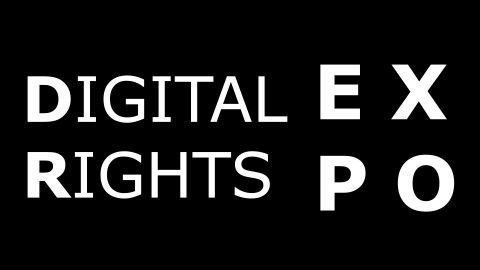September 11 - 22 September we are in the town hall (The Atrium Spui)
Project Inholland
DISCOVER YOUR DIGITAL RIGHTS
A physical version of the expo landed in Amsterdam on 21 June 2023 as part of DRH Experience during MozFest House. Next stop was The Hague on 11 - 22 September 2023 in Atrium of the City Hall of The Hague. Next: Helmond
THE HAGUE 11 - 22 September
On Monday 18 September at 15:30 a talk toke place with students from Inholland at the expo venue.
IMPRESSIONS
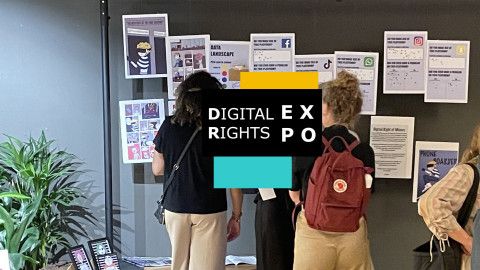
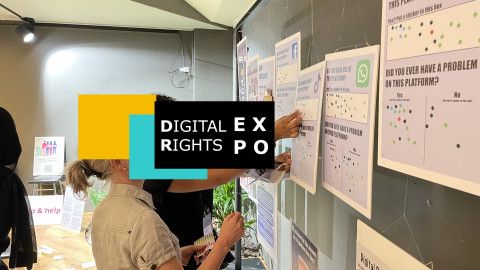
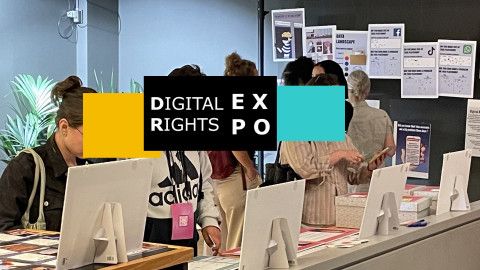
INTRODUCING:
DISCOVER YOUR DIGITAL RIGHTS
This exposition is created by the students of the Inholland Sustainable Media Lab, supported by Inholland, Digital Rights House, and the Wish Will Way Foundation. The purpose of this project is to raise awareness among citizens about their digital rights and the impact of technology on our daily lives. Researching on neighbourhood level is important. For this project the neighbourhood Morgenstond in The Hague was selected. During the project students talked to citizens in order to learn more about the impact of digital rights in this neighbourhood. Through this expo, three groups will showcase their innovative prototypes, each focusing on a specific digital right. The groups have creatively developed their prototypes with the aim of fostering a greater understanding among the public. This project includes a virtual and physical expo. Watch this space for more details.
Digital Gen
Project group 1
The first project team is 'Digital Gen.' A group of four students from different academic disciplines. Driven by a collective passion, they are dedicated to fostering awareness and imparting knowledge to both parents and children regarding the crucial importance of safeguarding minors in the ever-expanding realm of digital spaces.
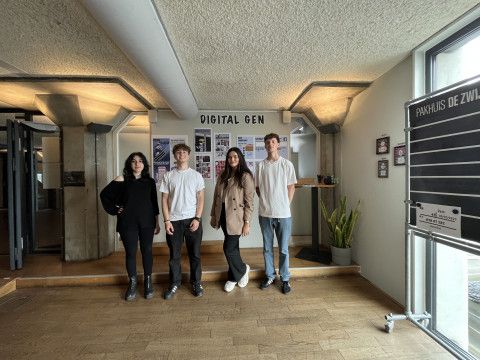 Alara, Jim, Asli, Sander
Alara, Jim, Asli, Sander Phoneboarder
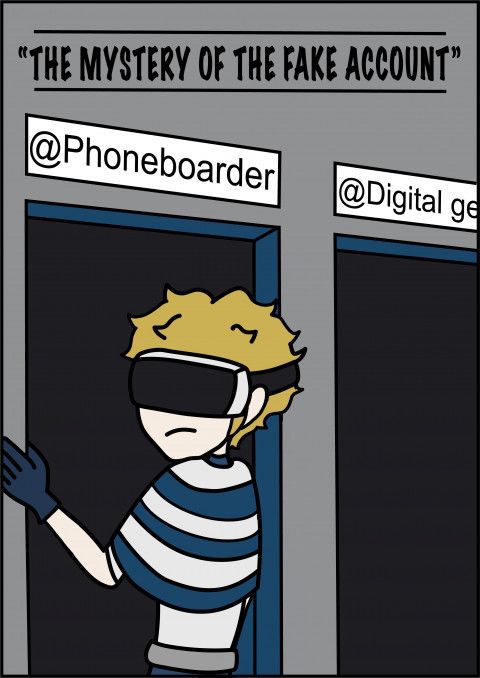
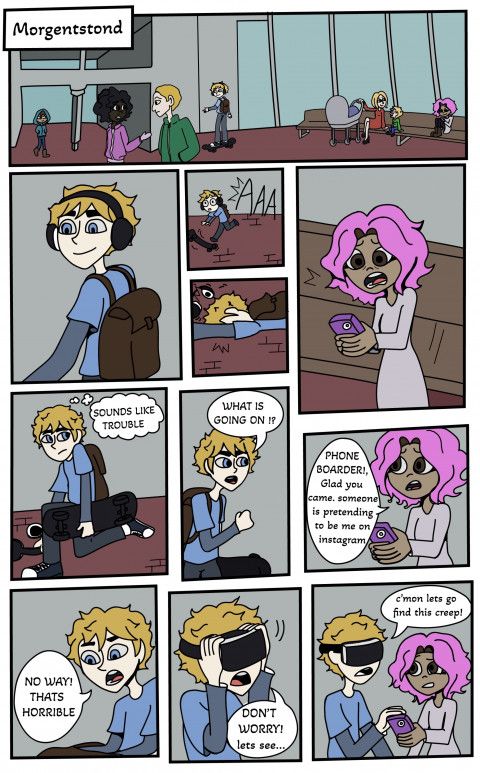
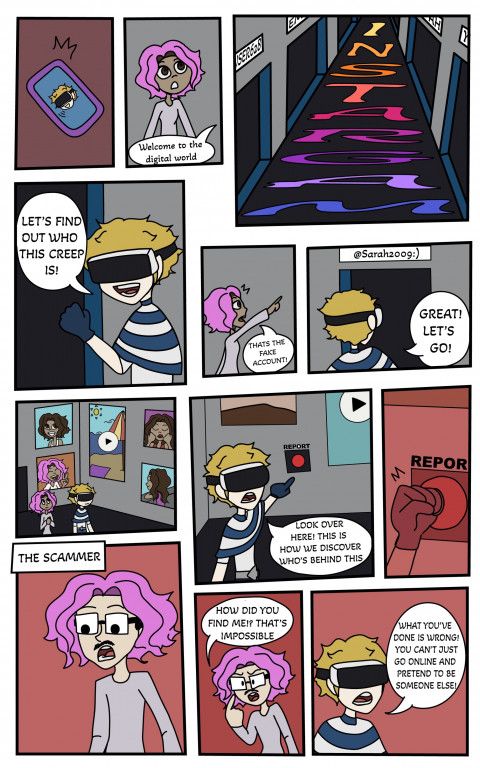
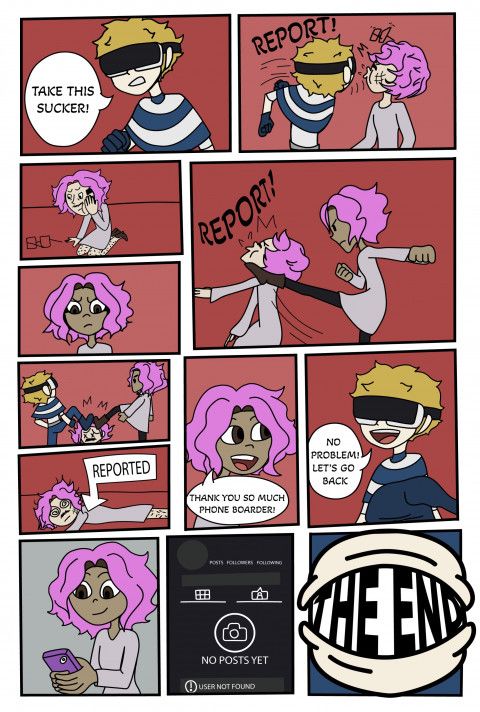
THE CHARACTERS
The characters in the comic book
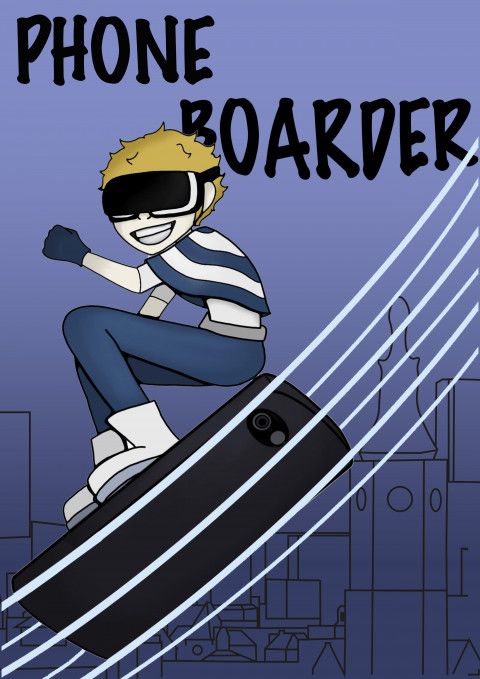
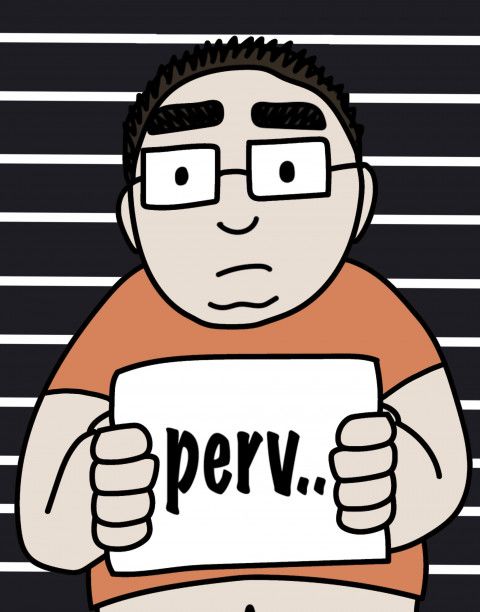

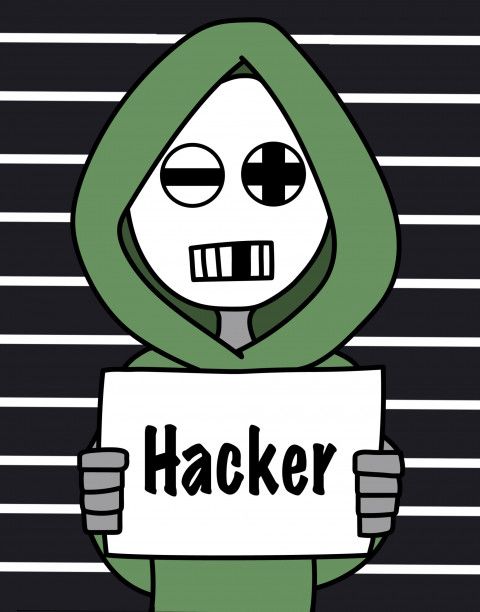
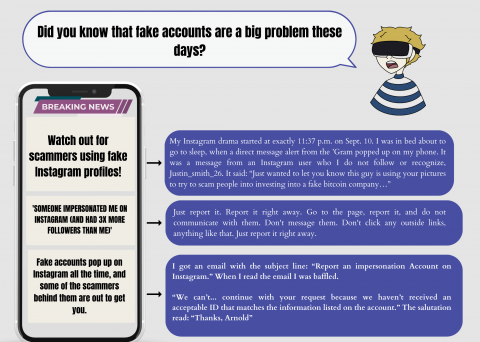
Data landscape
The “Data landscape” serves as a method to collect data on which age demographic is active on different platforms and social media. Visitors can use stickers of different colors based on their age and answer the questions of the data landscape by simply putting a sticker in the spaces of the answers. With all the collected data, the team is able to map out on which platforms minors are active and on which platforms people have experienced more problems.
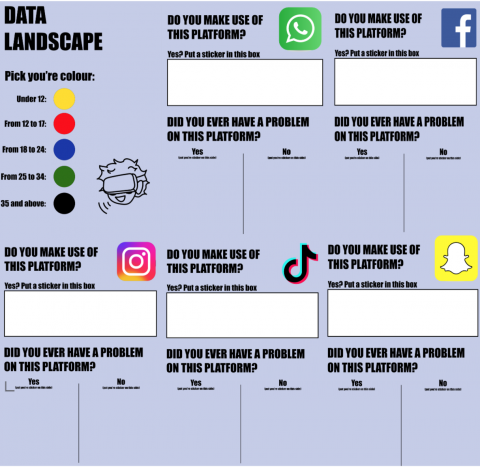
Interview with the team
 Alara, Jim, Asli, Sander
Alara, Jim, Asli, Sander Were you already familiar with digital human rights and what it entails prior to the Sustainable Media Lab?
Asli: "Kind of but not entirely, we were familiar with rights and human rights but not specifically digital rights.”
Can you tell us about the prototype you have made? What did you focus on with regards to human rights in the digital domain?
Jim: “We have chosen the right of protection of minors. We focus on their digital presence, on social media for example. We created a comic book about a superhero that helps others with their digital rights issues.”
Can you describe in three words how you experienced working together on digital human rights?
Jim: “Interesting, shocking and impactful.”
BE AWARE OF HATE
Project group 2
About the team
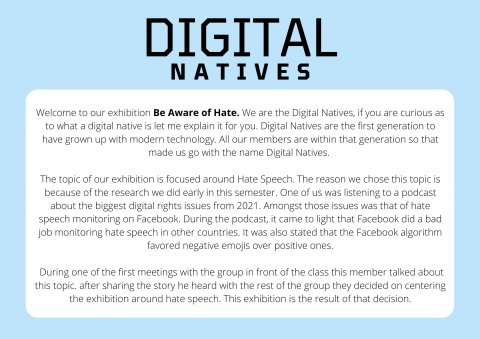
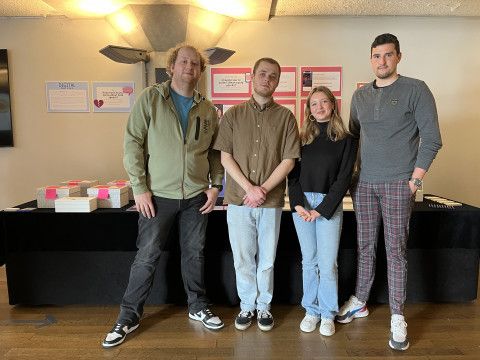 Robert, Joran, Bente, Mikey, Eva (not on the picture)
Robert, Joran, Bente, Mikey, Eva (not on the picture) Listen and learn
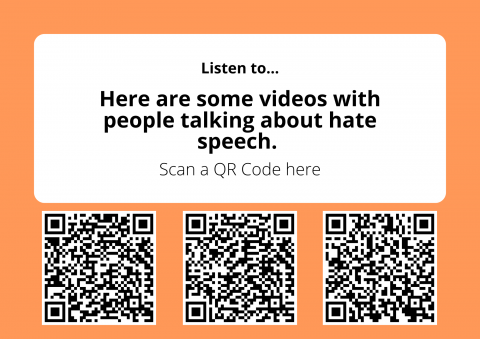
What would you do?


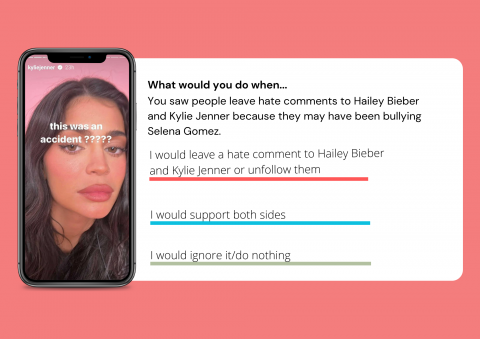
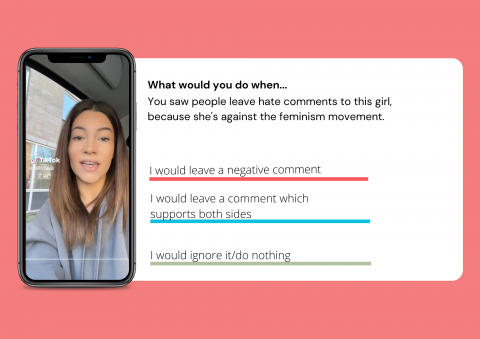
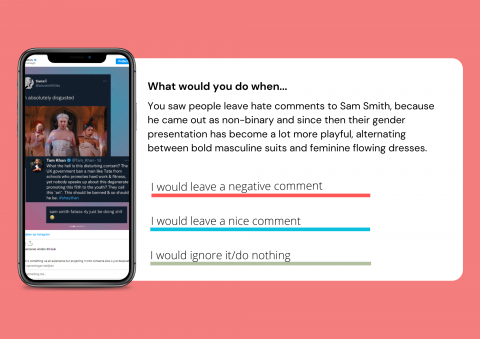
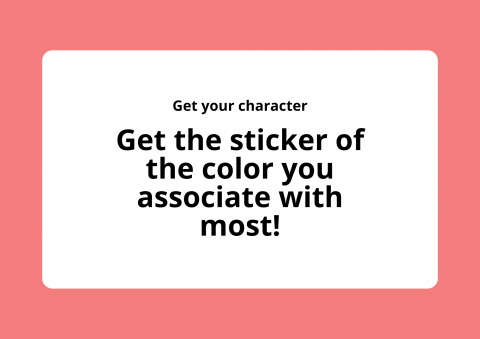
This station is an online personality test where visitors are asked to imagine themselves scrolling online and interacting with different posts about different topics. The questions ask “what would you do?” giving the visitor a choice between leaving a hateful comment, not interacting with the post at all or leaving a comment in support of all sides involved. The answers are coded in three colors: red, green and blue. In the end visitors can count the amount of answers they gave and which colors are associated with them, to see what type of online archetype they are.
Dotmocracy board
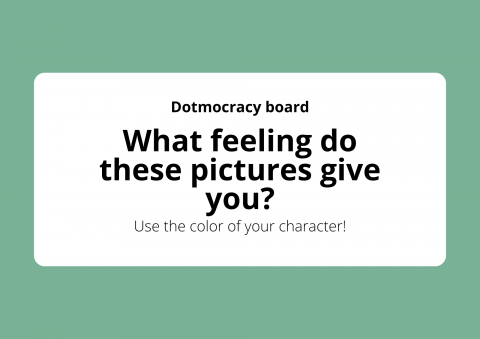
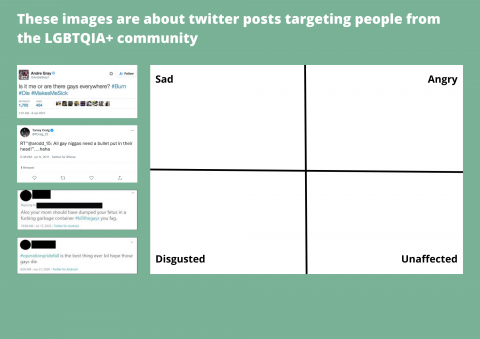
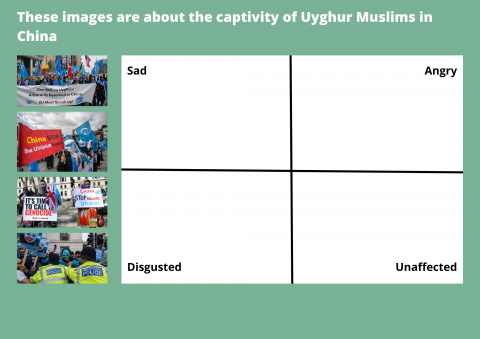
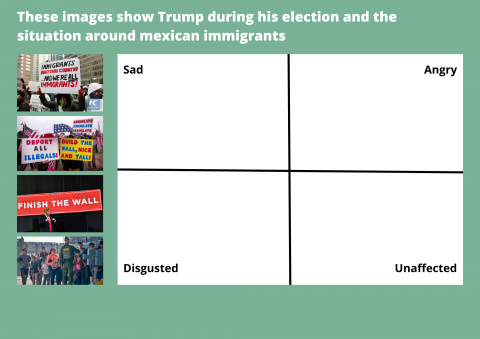

What feeling do these images give you?
The station focuses on the emotional impact of images regarding hate speech. The visitors are shown a variety of images and pictures that conduct hate speech or reinforce hate speech. The images are placed in a frame divided by a cross in the middle, each frame represents a different term: sad, disgusted, unaffected and angry. Visitors are asked to put a sticker in the frame of the term that they associate the images with, showcasing how they feel towards seeing the images.
Scenario puzzle
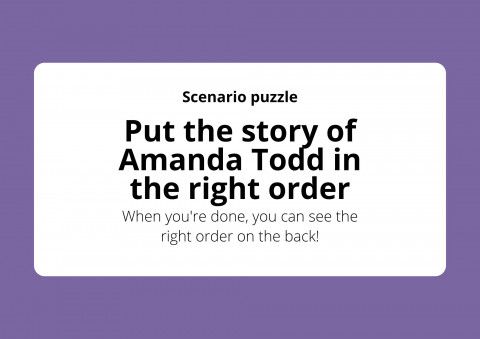

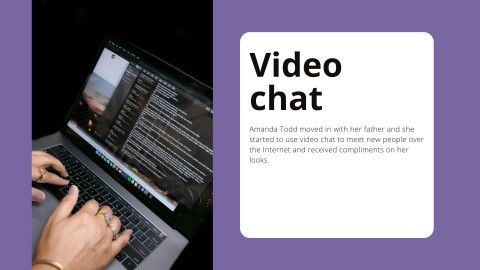
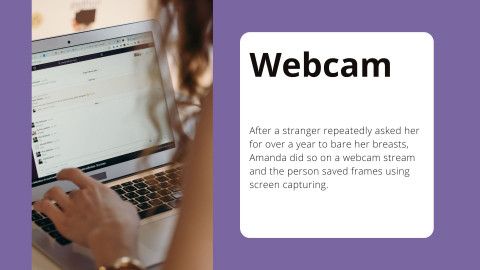
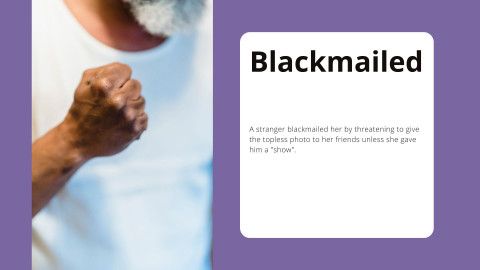
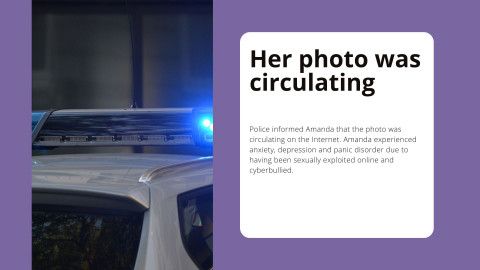
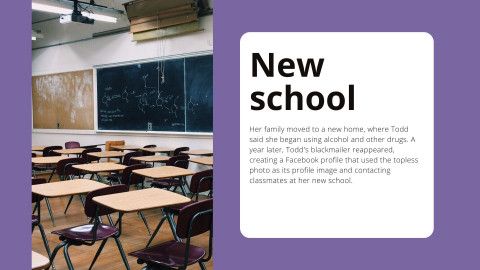
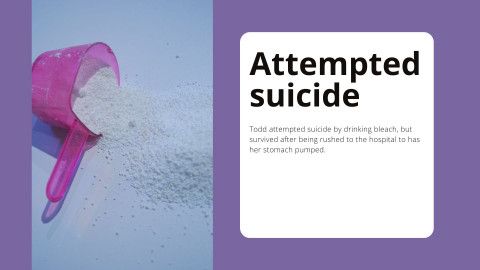
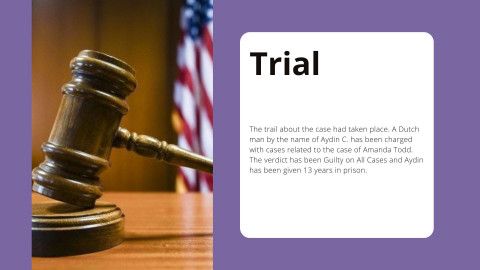
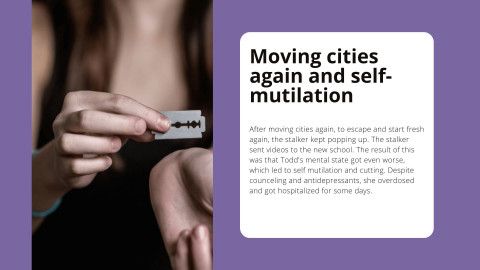
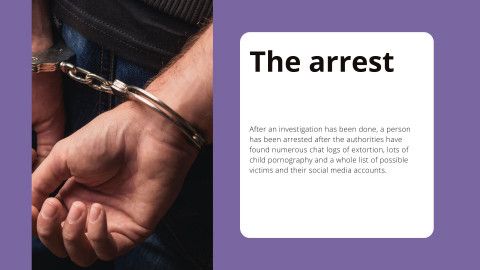
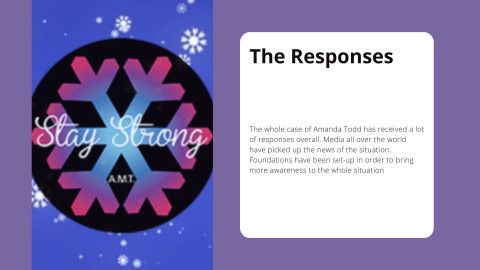
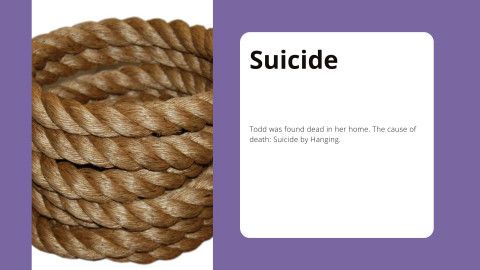
This station focuses on the case of Amanda Todd, a young girl that fell victim to hate speech and suffered the consequences of hurtful comments other people left online. In this station, visitors are asked to put the story of Amanda Todd in the right order. Each phase of the Amanda Todd case is divided into different cards. The cards are scattered over a big table where visitors can put the cards in the right order of events happening during the case. The goal of this station is to educate visitors on how hate speech can impact another person’s life and wellbeing.
Interview with the team
Were you already familiar with digital human rights and what it entails prior to the Sustainable Media Lab?
Robert: "Not very specifically. I spend a lot of time online, so I know about privacy and such things. But for the other rights I didn't know all the details.”
Can you tell us about the prototype you have made? What did you focus on with regards to human rights in the digital domain?
Robert: "We focused on the theme of 'hate speech'. The exhibition we created aims to raise awareness that hate speech exists and also provide information on what it is and what its consequences can be. We want to convey the impact of the consequences that can arise, for example, when leaving a negative comment online.”
Can you describe in three words how you experienced working together on digital human rights?
Robert: "Shocking, interesting and influencing"
 Robert, Joran, Bente, Mikey
Robert, Joran, Bente, Mikey Empowered Women
Project group 3
The third project team is 'Empowered Women', a group of four dedicated women who have chosen the right of prevention of online (sexual) harassment and intimidation. The team feels passionate about empowering women and educating others on how to empower yourself by knowing your rights.
 Sanne, Bo, Isa, Elisa (not on the picture)
Sanne, Bo, Isa, Elisa (not on the picture) Yes or No?
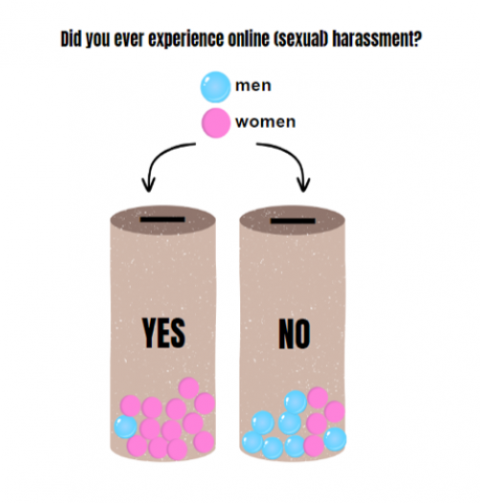
The 'Yes or No' station consists of visitors answering a fast thinking question regarding their experience with online (sexual) harassment. Each visitor takes a sticky-note from a container and puts it in the vase which answers the question for them with either a “yes” or a “no”. The goal of this station is to collect data on how many people have experienced online (sexual) harassment and if the people answering the question are men, women or other.
Where do you stand?
From idea to prototype
'Where do you stand?' is a game where visitors are asked to answer the following two questions:
1. "Did you ever experience online (sexual) harassment?"
2. "Do you regret sending/posting personal information online?"
The game is laid out on a table, with a large black cross dividing the space in four separate spaces with different terms placed on the table: A lot, Not at all, Okay experience and Bad experience. Visitors are asked to answer the two questions with sticky-notes by placing them in the space of the terms that resonate with their experience and answer the questions.

Watch and learn
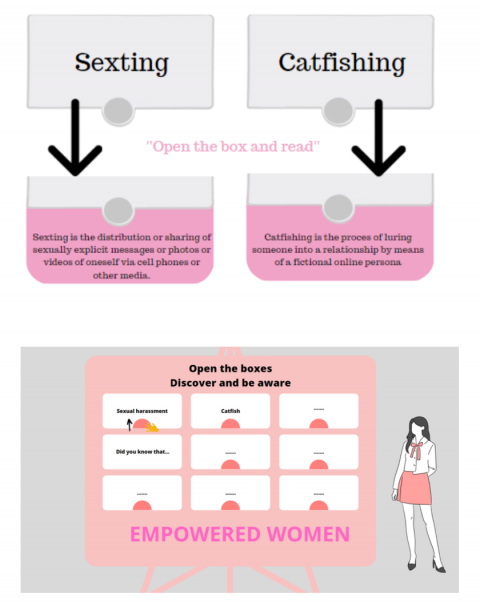
“Watch and Learn” is an informative station where visitors are shown different quotes on top of boxes hanging from the wall. Visitors are able to open the boxes, inside they will see information about the topic represented by the quotes on the top of the boxes. The goal of this station is to create awareness around different types of online (sexual) harassment and to educate visitors on how to identify online (sexual) harassment.
Listen and learn
The listening station is intended to educate visitors about online (sexual) harassment and intimidation. The visitors can put on headphones, scan the QR code and listen to stories of victims. These stories will include topics ranging from: online intimidation, blackmailing, catfishing and bullying. The goal of this station is to create awareness amongst the listeners about these topics. Furthermore, it is created to get people talking and to start a conversation about a topic that is confronting, and uneasy to talk about. When the audience is confronted with a story about what happened to someone else, they might feel less alone with bad experiences. More importantly, they might reach out to their loved ones.
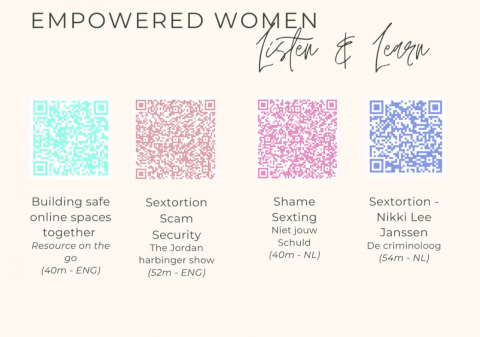
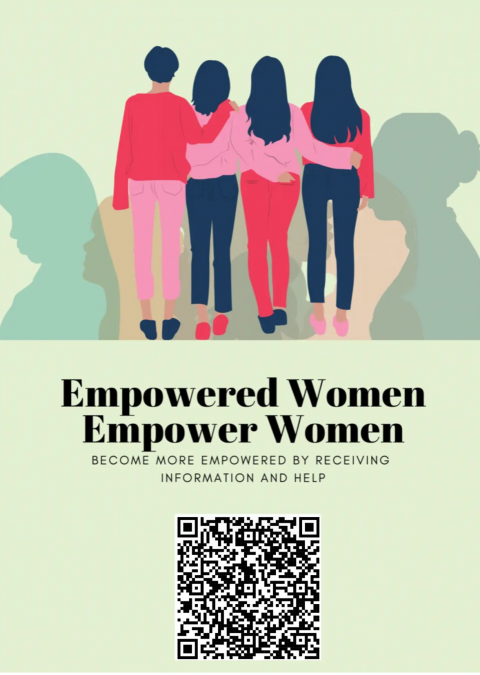
Info and help
The last station is called “Info and help” and is an important part of ending the exposition. In order to make sure that the team has fulfilled their purpose to protect and help, a flyer with QR-code is shown with referrals to organizations that help victims with their experience and how to proceed from the moment they experienced online (sexual) harassment. The exhibition of the group is meant to raise awareness, educate and leave an impact. However, visitors should not leave with a negative feeling, shock or triggered. The last station serves as a prototype that does not inform about the dangers, but about the solutions and where to find help when needed.
Interview with the team
Were you already familiar with digital human rights and what it entails prior to the Sustainable Media Lab?
Sanne: "I knew that it existed, that digital rights were a thing, but I didn't know the specifics. It's quite a difficult topic, and there are a lot of important rules, and I didn't know beforehand how everything fit together.”
Can you tell us about the prototype you have made? What did you focus on with regards to human rights in the digital domain?
Bo: "Our exhibition and flyer campaign aims to initiate a conversation about sexual harassment online. We didn't have the information when we were younger, and we want to provide that information to young girls and women today.”
Can you describe in three words how you experienced working together on digital human rights?
All: "Important, intense and also nice!"
 Sanne, Bo, Isa, Elisa
Sanne, Bo, Isa, Elisa INTRODUCING:
Digital Rights House
We work with Inholland and the Sustainable Media to inspire and encourage young people to think along with us in accelerating safeguarding of our digital human rights in society. We enjoy seeing their creativity unleashed as they explore digital human rights through exhibitions, workshops, and most recently internships with us! We receive so much in turn for our investment: ideas that are innovative, a young person’s perspective, and the opportunity to help the next generation develop.
Inholland
At the Sustainable Media Lab we bring together leading researchers, experts and practitioners to explore what more sustainable media systems could look like. Rapidly changing technical, legal, and societal environments require a different way of thinking about media, its technical entanglements and its role in society.
Rapidly changing technical, legal, and societal environments require a different way of thinking about media, its technical entanglements, and its role in society. Our researchers, students, and partners work on a variety of projects exploring the role of media in our society. From the intensification of fake news to the ways in which AI can pose a threat to our human rights, we are excited to explore the many wicked problems that affect our media systems in an agile and design-oriented way.
Wish Will Way Foundation
In stimulating the rise of a more dignity driven society we believe it is important to raise more awareness among citizens. In doing so research on city and neighbourhood level is crucial. Working with students is not only fun but also very inspiring.
_______________________
DIGITAL RIGHTS EXPO X INHOLLAND
A very Big Thank You to all people and organisations involved. You are GREAT!
Project Inholland is supported by Inholland, Digital Rights House and Wish Will Way Foundation.
Every day is Digital Rights Day
Together we can raise the bar on our Digital Human Rights! #everydayisdigitalrightsday
